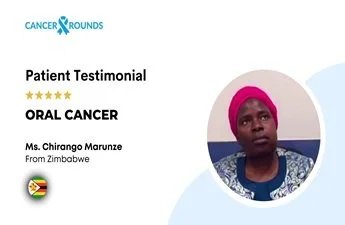Head and Neck Cancer
What is Head and Neck Cancer?
Head and neck cancer refer to a group of cancers that develop in areas such as the mouth, throat, voice box (larynx), nose, sinuses, and salivary glands. These cancers commonly originate in the squamous cells that line the moist surfaces within the head and neck region. Going beyond the obvious is essential—understanding the distinct nature of head and neck cancers, including their diverse origins, potential causes, and varied symptoms, is a crucial first step toward early detection, effective treatment, and improved outcomes.
When we think about cancer, we usually picture the more common types—like breast, lung, or bowel cancer. But there’s an entire group that starts in one of the most essential and complicated areas of the body: the head and neck. These cancers don’t always get the attention they deserve, even though they can be just as serious. One early warning sign to look out for is a cancer lump on the neck, which can sometimes be the first clue that something isn’t right. Knowing where these cancers begin, what causes them, and what symptoms to watch for can make all the difference.
Cancer Neck Pain Symptoms: Where Do These Cancers Begin?
Head and neck cancers most often begin in the moist, mucous-lined surfaces of the mouth, nose, and throat. These areas are made up of squamous cells, and cancers that arise here are commonly referred to as squamous cell carcinomas. A common early symptom is a cancer lump on the neck, which may signal that the cancer has spread to nearby lymph nodes. Recognizing this and other early warning signs is critical for timely diagnosis and treatment.
- The Oral Cavity (The Mouth): This is everything you see and feel inside your mouth – the front two-thirds of your tongue, the inner lining of your cheeks and lips, the floor of your mouth (under your tongue), the hard part of the roof of your mouth, and your gums. Cancers here are quite common within the head and neck group and are often linked to smoking and chewing tobacco.
- The Pharynx (The Throat): This is the tube that runs from the back of your nasal passages down towards your windpipe and food pipe. It’s divided into three sections:
- Nasopharynx: The very top part, right behind your nose. Cancers here are relatively rare in most parts of the world but more common in certain areas like Southeast Asia.
- Oropharynx: The middle part, which includes the back section of your tongue, the soft part of the roof of your mouth, your tonsils, and the back wall of your throat. This is where we’re seeing a significant rise in cancers linked to the Human Papillomavirus (HPV).
- Hypopharynx: The lower part, just above where the pathway splits into your esophagus (food pipe) and trachea (windpipe). Cancers here are often found at later stages because symptoms might not be obvious early on.
- The Larynx (The Voice Box): This is a small but vital structure in your neck, sitting below the hypopharynx. It houses your vocal cords, essential for breathing and speaking. Cancer here can dramatically affect your voice.
- The Nasal Cavity and Paranasal Sinuses: The nasal cavity is the space inside your nose. The paranasal sinuses are the air-filled spaces within the bones of your face that connect to the nasal cavity. Cancers in these areas are less frequent than in the mouth or throat.
- The Salivary Glands: These glands produce saliva, helping with digestion and keeping your mouth moist. The largest are the parotid glands (in front of the ears), submandibular glands (under the jaw), and sublingual glands (under the tongue). Cancers here are uncommon.
It’s worth noting that cancers starting in other nearby areas like the brain, eye, thyroid gland, or esophagus are typically treated as different types of cancer, even though they’re in the same general neighborhood.
Who’s Affected and Why? The Risk Factors
Head and neck cancers aren’t among the most common cancers overall, but they represent a significant health challenge. Neck cancer, a major subset of these cancers, has historically been more prevalent in men and older adults, largely due to smoking and tobacco use. However, this trend is shifting with the rising impact of HPV, which is now a leading cause of many head and neck cancers in younger populations.
Tobacco Use
Tobacco remains the most significant risk factor for head and neck cancers. This includes smoking cigarettes, cigars, or pipes, as well as using smokeless tobacco products like chewing tobacco and snuff. These substances expose the tissues of the mouth, throat, and voice box to harmful chemicals that can damage cells over time. The risk increases with the amount and duration of tobacco use.
Alcohol Consumption
Regular and heavy alcohol intake is another major contributor to these cancers, particularly those of the mouth, pharynx, and larynx. Alcohol can irritate and damage the cells lining these areas. Moreover, when combined with tobacco use, the risk multiplies significantly, as the two substances work together to enhance each other’s harmful effects.
Human Papillomavirus (HPV)
Certain strains of HPV, especially HPV-16, are linked to cancers in the oropharynx, which includes the tonsils and base of the tongue. HPV is a common virus transmitted through sexual contact. While many HPV infections resolve on their own, some persist and can lead to cellular changes that may develop into cancer over time.
Sun Exposure
Prolonged exposure to the sun’s ultraviolet (UV) rays increases the risk of lip cancer. This is particularly relevant for individuals who spend extended periods outdoors without adequate lip protection.
Dietary Habits
Diets low in fruits and vegetables may contribute to a higher risk of head and neck cancers. These foods are rich in vitamins and antioxidants that help protect cells from damage.
Oral Hygiene
Poor oral hygiene and dental health can also play a role. Issues such as gum disease, tooth loss, and ill-fitting dentures can create an environment conducive to cancer development.
Occupational Exposures
Exposure to certain substances in the workplace, such as wood dust, nickel dust, formaldehyde, and asbestos, can increase the risk of cancers in the nasal cavity and sinuses. Individuals in industries like construction, textile, and logging should be aware of these risks and take appropriate protective measures.
Epstein-Barr Virus (EBV)
EBV, the virus responsible for mononucleosis, has been associated with nasopharyngeal cancer. Infection with EBV can lead to changes in the cells of the nasopharynx, potentially resulting in cancer.
Other Factors
- While most people associate cancer risk with lifestyle habits, there are some rare medical conditions that can also play a role. One example is Plummer-Vinson syndrome, a disorder linked to iron deficiency anemia and small webs in the esophagus, which can increase the risk of hypopharyngeal cancer. On top of that, certain inherited genetic syndromes may raise the chances of developing head and neck cancer, including various forms of neck cancer.
- It’s important to remember that having one or more of these risk factors doesn’t mean you’ll definitely develop cancer—and some people with no obvious risk factors still end up being diagnosed. Early warning signs, like a cancer lump on the neck or persistent cancer neck pain symptoms, should never be ignored. Knowing what is head and neck cancer, what increases the risk, and what symptoms to look out for can help with early detection and timely treatment.
Doctors For Head and Neck Cancer
Need More Recommendations ?
Spotting Trouble: Signs and Symptoms
Here are some common symptoms of head and neck cancer:
- A Sore or Ulcer That Won’t Heal: A sore or white or red patch in the mouth, on the tongue, or on the lip that doesn’t heal within two or three weeks. Often, these spots aren’t painful early on.
- A Persistent Sore Throat: A sore throat that lasts for weeks and doesn’t get better with usual treatments.
- Difficulty Swallowing (Dysphagia): Feeling like food is getting stuck, pain when swallowing, or food coming back up.
- Changes in Your Voice: Hoarseness, a raspy voice, or other voice changes that hang around for more than a couple of weeks. This is a common symptom for laryngeal cancer.
- A Lump in the Neck: A lump or swelling in the neck is a common sign, often due to cancer spreading to a lymph node.
- Unexplained Weight Loss: Losing weight without changing your diet or activity level.
- Trouble Breathing: Feeling short of breath or having noisy breathing.
- Chronic Nasal Congestion: Persistent blockage of one side of the nose, particularly if accompanied by unusual discharge or bleeding.
- Frequent Nosebleeds or Unusual Nasal Discharge: Especially if it’s on only one side.
- Persistent Ear Pain (Otalgia): Pain in or around the ear, especially on one side, that doesn’t go away, or unexplained hearing loss. Sometimes this is “referred pain” from cancer in the throat.
- Numbness or Pain: Numbness or ongoing pain in the face, mouth, or neck.
- Loose Teeth or Problems with Dentures: Teeth becoming loose for no clear reason, or dentures suddenly not fitting well.
- Persistent Bad Breath (Halitosis): Foul breath that doesn’t go away despite good oral hygiene.
If you’re experiencing any symptoms that aren’t going away, don’t put off seeing your doctor or dentist. They can help get to the bottom of what’s going on. Head and neck cancers can show up in different ways depending on where they start, which is part of what makes them tricky to catch early.
Many early signs can feel like everyday problems—like a lingering sore throat or sinus issues. But one thing to really pay attention to is how long the symptoms last. If you’re dealing with things like a sore throat, trouble swallowing, or cancer neck pain symptoms that stick around for more than a couple of weeks—especially if you have known risk factors—it’s a good idea to get it checked. Catching cancer early can make a big difference in how it’s treated and how well you recover.
Getting a Diagnosis: What to Expect?
If your doctor thinks you might have head and neck cancer, they’ll start by asking about your cancer neck pain symptoms and doing a detailed exam of your mouth, throat, and neck. They may use special tools like mirrors or a flexible scope to check hard-to-see areas.
If something looks suspicious, the next step is a biopsy—removing a small piece of tissue to check for cancer under a microscope. This is the only way to know for sure if cancer is present. Depending on where it is, the biopsy could be quick or may require mild sedation.
If cancer is confirmed, you’ll need imaging tests to see how far it has spread. These may include:
- CT scan – gives detailed cross-section images of your body
- MRI – shows clear pictures of soft tissues
- PET scan – spots active cancer cells anywhere in the body
- Chest X-ray – checks if it’s spread to the lungs
These results help determine the cancer’s stage—how big it is, where it’s located, and whether it has spread. This is key to deciding the best treatment plan.
Standard Treatment Options
- Surgery: Removes the tumor and often nearby lymph nodes. Reconstructive surgery may be needed afterward.
- Radiation Therapy: Targets cancer cells with high-energy rays. It may be used alone or with other treatments.
- Chemotherapy: Uses drugs to kill cancer cells, often combined with radiation for stronger effects.
- Targeted Therapy: Blocks specific changes in cancer cells that help them grow.
- Immunotherapy: Boosts your immune system to help fight the cancer.
Most patients receive a combination of treatments. The aim is to cure the cancer while preserving the ability to speak, eat, breathe, and maintain appearance.
Complications of Head and Neck Cancer Treatment
Treating head and neck cancer can lead to side effects like difficulty swallowing, dry mouth, or changes in speech and taste. Neck cancer may also cause lasting discomfort or cancer neck pain symptoms. Even after treatment, a cancer lump on the neck may persist. Knowing what is head and neck cancer helps in managing these challenges early.
Head and Neck Cancer Survival Rates
Survival rates for head and neck cancers vary depending on the cancer’s location and stage at diagnosis. Overall, the 5-year survival rate for these cancers ranges from 50% to 60%, but this can differ significantly based on specific factors.
By Cancer Type:
- Oral cavity and pharynx cancers: Approximately 68% 5-year survival rate.
- Laryngeal cancer: Around 61% 5-year survival rate
By Stage at Diagnosis:
- Localized (confined to the primary site): 5-year survival rate of about 88.4%.
- Regional (spread to regional lymph nodes): Approximately 69.4% 5-year survival rate.
- Distant (cancer has metastasized): Around 36.9% 5-year survival rate.
Regular check-ups and awareness of symptoms can lead to earlier diagnoses and better outcomes.
5 easy Steps to Get Treated in India

Share Case Details

Get Expert Opinion and Hospital Quotes

Get Visa Invitation & Hotel Recommendations

Get Received At Airport and Start Your Treatment

Travel Back and Get Followups Through Us
Life After Treatment: Moving Forward
Finishing treatment is a big milestone, but recovery continues. Regular checkups help catch any signs of the cancer coming back and manage long-term side effects.
Treatments may affect speech, swallowing, or eating. Rehab services like speech and swallowing therapy can help restore these functions and improve daily life.
If you’ve used tobacco or alcohol, quitting for good is vital. It reduces the risk of recurrence and helps prevent new cancers.
Prevention Starts Now
Many head and neck cancers are preventable. Here’s how you can reduce your risk:
- Don’t use tobacco—quit if you do, and never start if you don’t.
- Limit alcohol or avoid it altogether.
- Get the HPV vaccine—it protects against viruses linked to certain throat cancers.
- Protect your lips from the sun—use SPF lip balm and wear hats.
- Eat a healthy diet rich in fruits and vegetables.
- Take care of your oral health—brush, floss, and see your dentist regularly to catch problems early.
Taking these steps can go a long way in protecting your health.
Your Trusted Partner: Cancer Rounds for Head and Neck Cancer Care
- Specialist Doctors – You get care from expert cancer doctors who treat head and neck cancers every day.
- Personal Attention – Your treatment is planned just for you, based on your condition and needs.
- Latest Treatments – They use modern therapies like targeted drugs and immunotherapy.
- Full Support – You get help not just for treatment, but also for diet, emotions, and recovery.
- Affordable Care – High-quality cancer treatment at a lower cost than many other places.
- Top Hospitals – Connected with the best hospitals across India for better care and comfort.
- Easy Follow-Ups – Regular check-ins and updates to your treatment without any hassle.
- Clear Guidance – They explain everything in simple terms so you always know what’s happening.
You May Be Also Interested In
All Type Of Cancer Pages
Related Patient Stories

My wife had oral cancer. With Cancer Rounds’ help, we came to BLK Hospital. Thanks to Dr. Kapil Kumar, she's feeling better now.
Our Impact
CancerRounds is making quality cancer care accessible to more people every day.




Why Choose India for Cancer Treatment?

World-Class Care
Skilled oncologists provide top-tier medical services

Affordable Treatment
Costs are significantly lower than in Western countries.

Comprehensive Packages
Hospitals offer all-inclusive plans covering surgery, stay, and aftercare.

Easy Accessibility
Well-connected airports and international flight routes.

Proven Success
High patient satisfaction and positive treatment outcomes
Thank You!
Your form has been submitted successfully.





 Chat on WhatsApp
Chat on WhatsApp